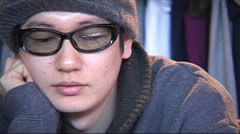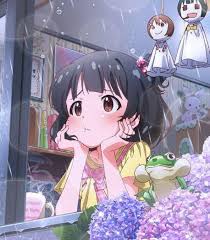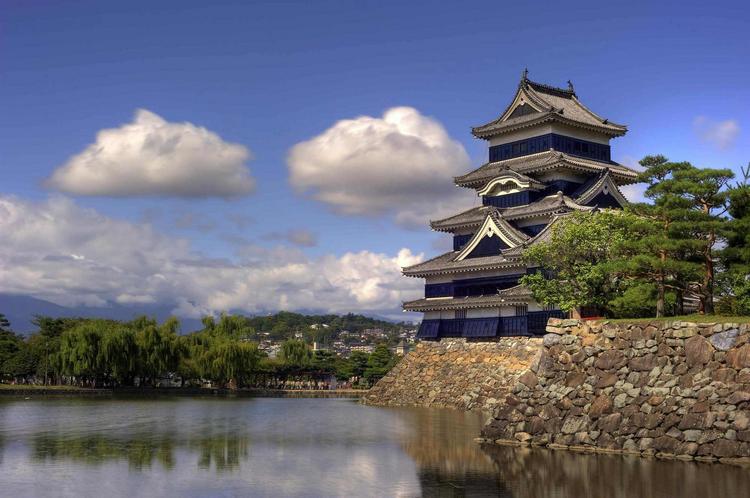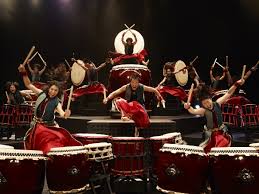HIROKAZU KORE-EDA: UNSUMPENT MEMORIES
 Whatever skeptics say, we cherish our memories. But do we ourselves know about this? Acquired life experience is nothing more than a collection of memories. Both the good ones, pushing for activity in the same direction in which we liked to go once, and the bad ones, taking a step on a curved path.
Whatever skeptics say, we cherish our memories. But do we ourselves know about this? Acquired life experience is nothing more than a collection of memories. Both the good ones, pushing for activity in the same direction in which we liked to go once, and the bad ones, taking a step on a curved path.
But is it possible to choose one, only one memory, with which you would stay forever, and lose everything, forget, erase everything else?
Employees of one celestial office help to answer this question to just dead people, giving them only three days to choose, in the film by Japanese director Hirokazu Kore-eda / After Life / After life /, which premiered on our television not so long ago. After all, it is this very unique memory that will determine the new karma of rebirth …
The Kore-eda parable is not about us. About our memories. Like almost all of his film works.
Who is he, Sensei Hirokazu Kore-eda? Let’s remember …
Perhaps among film enthusiasts there are few connoisseurs of documentary filmmaking. And among those who were still found – even less knowing Japanese documentary films. After all, Sensei Kore-eda is a documentary filmmaker. Documentary documentary recognized outside of Japan. So what do we remember about him?
Hirokazu Kore-eda was born in Tokyo in 1962. In 1987 he graduated from Waseda University / Waseda University /.
“I had to become a novelist writer to go to university,” Kore-eda recalls in one of his interviews, “But I loved and love movies and TV.” I would say that I belong to the generation that grew up on television. From the very beginning, I liked dramas and documentaries. But at the same time, in those years I did not make a single 8-mm film of my own, I did not belong to any cinematic circle. I spent my free time reading scripts and going to the movies.
After graduation, she first plans to work for Iwanami Production, but due to the fact that this studio has almost recruited staff and was engaged exclusively in PR videos, she goes to work for TV Man Union as an assistant director, where she prepares various film programs on television.
“I myself was interested in working on TV Man Union,” recalls Kore-eda, “In our student days, our Bible was the book“ You are no more than the Present ”/ Omae wa tada no genzai ni / – a collection of articles on how to shoot television programs written by the creators of TV Man Union. I thought as well, and decided, why not try to go to them.
First impressions of the work were painful. The world of the television industry, in which Kore-ed fell, was very different from his fantasies. It was a world where everything was aimed at making a profit. Moreover, it turned out that he did not have the special talent of an assistant director, and not a day passed that he was not reproached for his futility. But lapped, Sensei continues to work. Not forgetting, however, about his desire to try to remove something of his own on his own.
And after a year of work, he still decides to start his own project.
“After a year of work,” Sensei recalls, “I was scared that I would lose those sketch ideas that I would like to shoot myself.” Since I have not shot an 8 mm camera yet, I decided it was time to pick it up. When thinking about the eternal question “what to shoot?” for some reason, only television programs got into my head. At that time, Asahi’s News Station often showed Harugumi / Harugumi / in which schoolchildren raised a cow. The faces of these children were deposited in memory. And so came the idea of the painting “Lessons from the Calf” (“Lessons from Calf” / Mo hitotsu no kyoiku: Ina Shogakko Harugumi no kiroku /, 1991). I asked the teacher for permission to visit their school. And after playing with the children, their activities, and sharing breakfasts (laughs), I decided: this is what I will shoot.
Sensei Kore-ed’s first independent work was released in 1991.
“Lessons with a Calf” / Lessons from Calf / about school life, in which there was a place for an ordinary cow. And, probably, schoolchildren, when they grow up, will remember the classes in which they learned to care for the cow, recall those feelings, those emotions that they experienced in these lessons. About these children’s emotions, about these children’s feelings, Kore-eda tells us. He really shot this picture on his own: on TV Man Union they didn’t even know about it. At a time when cell phones were still not widespread, Sensei simply discouraged spending all his days in libraries picking up materials for television programs. Having made another selection the day before, Kore-eda left for the whole day in Ina (there was a school). He took pictures of children all day, and returned to Tokyo in the evening. For more than two years, he shot more than 200 hours of film footage. And when Kore-eda was offered to make a new film after the successful film “And Still …” (“However …” /Shikashi…fukushi kirisute no jidai ni /, 1991), Sensei said that he already has something, and suggested watching Kanemitsu Osamu, one of the producers of Fuji, to watch The Lessons.




